This is my list of the top Asian Ingredients that I always keep on hand in my pantry/store cupboard. By keeping a small range of ingredients on hand, you will never be far away from creating a tasty Asian feast!
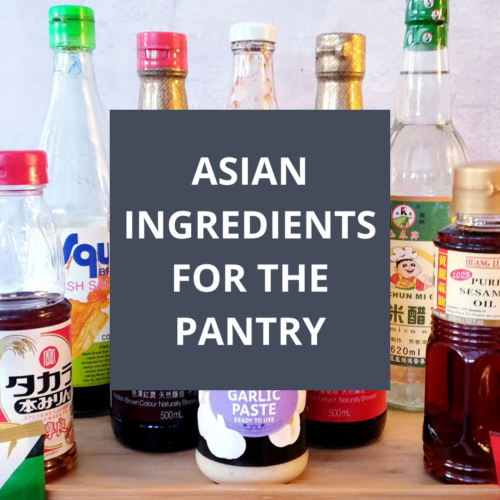
This post may contain affiliate links. Please refer to my Disclosures Page for more details.
Obviously I love the food of East Asia. I’ve plastered this site with Asian recipes which I love and make regularly. In order to eat and create recipes from the region, there are certain ingredients that I always keep on hand. I wouldn’t want to miss out on whipping up a Chinese New Year Feast at the drop of a hat now would I?!
I actually have far more ingredients than I’ve listed here as I’m a little obsessed. But these are the 15 items that I’d recommend you keep in the house as a sort of “Asian food starter pack”.
Where to Buy Asian Ingredients?
The availability of Asian ingredients has hugely increased over the last few years. Supermarkets are stocking ever increasingly large ranges and even shops like Aldi tend to stock most of the basics.
And then there are the small independent Asian grocery shops. Most places tend to have one not too far away. Certainly in the UK. You can generally even find one in most small to medium sized towns. And on the whole, they’re surprisingly well stocked. Especially if you have a deep dive into the freezers!
Cities with Chinatowns are obviously well catered for but my absolute favourite place to shop is one of the huge Asian Supermarkets like Wing Yip. They’re in Croydon, Manchester, Crinklewood and Birmingham.
I can only speak for the one in Croydon but its the size of a decent size Tesco with a cash and carry out back. They’re a cracking day out as far as I’m concerned. I can spend hours browsing. Just make sure to take some cool bags. They do also sell online although not fresh or frozen items.
Longdan are another small chain albeit only centred around London.
I’m not affiliated with these shops, its just where I actually shop! The Amazon links on this page do however earn me a small commission. But I would actually recommend trying to find an Asian grocer in preference to using Amazon as the groceries can be quite pricey. But it is still useful as a last resort!
Asian Sauces and Wet Seasonings
Dark & Light Soy Sauce
Soy sauce (not “soya sauce” as I was raised saying!) is made from fermented soya beans. It provides a deep and rich savoury and salty flavour.
It is wise to note that there are various distinct varieties of soy sauce. They can broadly be split into dark and light varieties. I generally use light in my cooking and dark in my seasoning. The light varieties are indeed lighter tasting but are also saltier.
Tamari soy is a Japanese variety which is made without wheat and is therefore generally gluten free. Of the versions I’ve had, tamari always feels like a superior, cleaner tasting option. Other soy sauce varieties are now also commonly available gluten free.
Sweet soy is another option and it does what it says on the tin. The are also a multitude of other flavoured and blended varieties. But start with light and dark then take it from there.
Use Soy Sauce in these recipes:
Cranberry Dumpling Dipping Sauce Recipe
Sesame Tenderstem Broccoli Recipe
Fun Guo (Steamed Chinese Pork Dumplings Recipe)
Mirin
Mirin is a Japanese rice wine. Much like Sake but sweeter and containing less alcohol. I use it to provide a rich back note in a lot of my recipes.
You could substitute Shaoxing Rice Wine which is thinner and less sweet or even sherry. Mirin is like a concentrated but milder tasting version of these options.
You can mix mirin with soy sauce to form a rudimentary teriyaki sauce/marinade. Ginger, tofu and miso are my favourite flavours to combine with mirin.
Use Mirin in these recipes:
Miso Soup with Ginger & Tofu Recipe
Crispy Tofu Teriyaki (Vegan Recipe)
Fish Sauce (Nam Pla)
Fish sauce is made from fermented fish like anchovies. And it smells disgusting. Especially if you haven’t smelt it before. I easily tolerate the smell because I know how amazing it makes everything taste.
If you are feeling put off, simply remember that Worcestershire Sauce is also made from fermented anchovies. Not that strange after all is it?!
Fish sauce provides saltiness and intense, but unique savouriness. Finished dishes can remain fragrant but not off-puttingly so.
You can use fish sauce in marinades, soup bases, sauces and dipping sauces. The dipping sauce with my King Prawn Summer Rolls linked below is a particular favourite based on the Vietnamese condiment called Nước chấm.
If you need a vegetarian or vegan version, Nico over at Yumsome has a great recipe for a fish-free fish sauce.
Use Nam Pla in these recipes:
Sweet Chilli Chicken Thighs Recipe
Vietnamese Summer Rolls with King Prawn Recipe
Rice Wine Vinegar
Rice Wine Vinegar is simply a vinegar made from wine made from rice. It is generally less acidic and a little sweeter than European vinegars like red wine or malt.
The European exception to this rule would be balsamic and the Asian exception is black vinegar which is much more astringent.
Sour is a very common flavour is most East Asian cuisines. Most dishes aim to balance salt, sweet, sour and bitter along with “umami” or savouriness.
If you can’t find rice wine vinegar (although it is very commonly available), the best alternative to use would be sherry vinegar.
Use Rice Wine Vinegar in these recipes:
Sweet & Sour Chicken (No Batter Recipe)
Dumpling Dipping Sauce Recipe
How to Make Sushi Rice
Sweet Chilli Sauce
Sweet chilli sauce is pretty ubiquitous nowadays. There isn’t a chain pub in this land that isn’t serving something with a sweet chilli dipping sauce or mayonnaise. But this is no reason to dismiss it.
It is a tangy and sweet sauce made with red chillies. There are sweeter, milder varieties and hotter ones too. Make sure to check the label of the bottle you buy. I buy big bottles as I can use one of the littlies in one recipe.
My favourite named brand is “Healthy Boy Brand” both in name and flavour! Or you can make your own – try this recipe from Foodle Club.
The joy of sweet chilli sauce is the variety of uses. You can just use it straight out of the bottle as a marinade or sauce. Or combine it with a couple of other simple ingredients to boost the flavour profile.
Use Sweet Chilli Sauce in these recipes:
Sweet Chilli Salmon Recipe
Uramaki Sushi with Chilli Crab Recipe
Asian Seasoning Pastes
Ginger Paste
You can of course also use fresh ginger. But I am a huge fan of the jars of pastes. This is a brand I buy from the world food aisle or Asian grocer. I would avoid the chopped stuff found in little expensive jars near the regular spice section. That’s a bit pickled and funny tasting.
I use the paste for both ease and to minimise food waste. I’ve thrown out little nubs of ginger which have shrivelled up in the bottom of the fridge too many times. I hate peeling fresh ginger, it can be very woody rather than fresh & juicy. Plus it can be hell to crush.
So I buy it in jars. I think the flavour is just as good and I look for the brands that don’t add a ton of oil and nasties.
Ginger can be both sweet and spicy. Either way, I just love the flavour and I use it in many recipes which aren’t Asian inspired like my Peach and Ginger Crumble, Bourbon Peach Compote (spot the peach theme), Ginger Ham and Spicy Ginger Cake.
Use Ginger Paste to make these recipes:
Tofu Spring Rolls (Vietnamese Summer Rolls Recipe)
How To Cook Sticky Rice
Korean Pork Rice Bowl Recipe
Garlic Paste
I use garlic paste for the exact same reasons that I use ginger paste. I never throw out rotten and shrivelled garlic cloves or bulbs and I never have to mess up a board and knife crushing it.
Again I look to buy the varieties with minimal other ingredients and avoid the weird pickled chopped stuff from the supermarket spice section.
We all know garlic as a flavour. I tend to avoid it at breakfast if I can, but otherwise it is pretty much a free for all on cuisines and meals. Maybe I’ll avoid it for dessert too!
Use Garlic Paste in these recipes:
Vietnamese Summer Rolls with King Prawn Recipe
Chicken Satay Skewers Recipe
Miso
Miso is the name of my cat. Not that I’m obsessed or anything you understand. Doesn’t everyone look in fridge for new pet name inspiration? But the point is that there was Miso in my fridge. As there always is.
Like soy sauce, miso is also made from fermented soy beans. And there are huge numbers of varieties. The most common varieties are white (shiromiso) and red (akamiso).
White miso is probably the most common variety. It is young, sweet and light. Red miso is darker and richer. Other varieties can be found too, I usually have a tub of white miso and dashi-miso on hand. I keep them in the fridge and just dig in for a chunk when I need it. (And yes, my other cat is called “Dashi”!)
I use miso for soups, mix it with mayo for dips, in various marinades and sometimes just brush it right onto some meat or fish before cooking.
Use Miso to make these recipes:
Fried Onigiri with Miso Scallops Recipe
Miso Soup with Ginger & Tofu Recipe
Doenjang & Gochujang Pastes
I only came across these pastes in the run up to my trip to Korea in 2017. How I wish I’d found them before! Doenjang is like miso but with a seriously ramped up flavour. Its miso on speed.
Actually it really is similar to miso in that it is also a fermented soybean product. But it doesn’t contain koji which is the mould that gives miso its distinctive sweet flavour.
Gochujang is a spicy paste. A seriously spicy paste. Actually it does come in a variety of heats but tends to be on the hotter side. But it isn’t all about the heat. Gochujang is also a fermented paste and it is packed with rich and complex flavours.
I very often use both pastes together and they’re much easier to find than you might think. Most supermarkets stock a version of at gochujang if not doenjang too.
Use Doenjang & Gochujang Pastes to make these recipes:
Korean Belly Pork Recipe
Korean Ramen with Belly Pork Recipe
Asian Spices and Seasonings
Sesame Oil & Seeds
If you ever see a recipe that tells you to start by putting sesame oil in the pan, put the recipe down and back away slowly. Sesame oil is for seasoning, not cooking. Anyone that tells you otherwise mustn’t be trusted!
Look for pure roasted sesame oil. Many varieties are blended for cost and are low quality as a result. I’ve had my current bottle of oil for about 3 years and use it regularly. A little goes a long long way.
A sprinkle of sesame seeds is a fab garnish. Almost nothing I cook is spared. Look to buy roasted seeds as they do have more flavour. You can roast your own but it is much easier to just buy them. They’re super cheap too.
Use Sesame Oil or Seeds to make these recipes:
Tofu Siu Mai (Vegetarian Steamed Chinese Dumplings Recipe)
Salt & Chilli Edamame Beans Recipe
Shichimi Spice
Also known as Japanese 7 spice, shichimi should not be confused with the devil that is Chinese 5 spice. They are totally different. And importantly, shichmi doesn’t make everything taste like that that weird red marinade butchers are so fond of.
Like sesame seeds, I use shichimi as a finishing spice. I sprinkle a little over my rice before serving or dash some over a pork chop before cooking.
Usually you buy shichimi in little red containers a bit taller and thicker than a lipstick. And you can find it in most supermarkets – just head to the world food aisle.
Use Shichimi Spice to make Chilli Crab Uramaki. I also use it as a general seasoning, much as you might pepper on European dishes.
Asian Groceries
Dried Mushrooms
Whilst I use regular mushrooms a lot in my cooking, I almost solely used dried mushrooms in dumpling fillings! The mushroom flavour really comes through whilst not creating a high volume of filling.
I generally soak the dried mushrooms for 10-15 minutes in hot water. If you have a use for it, don’t waste the soaking water as that’s super tasty too.
Use Dried Mushrooms to make these recipes:
Siu Mai (Steamed Chinese Pork Dumpling Recipe)
Fun Guo (Steamed Chinese Pork Dumplings Recipe)
Tapioca Flour & Wheat Starch
These flours aren’t really essential. But now that I’ve started to make my own dumpling skins, they are to me!
You are relatively unlikely to find tapioca and wheat starch in your regular supermarket. But any asian grocer will stock them.
Please don’t be tempted to substitute regular wheat flour for the wheat starch. They might both come from wheat but the end product is quite different. Both wheat starch and tapioca flour have a consistency very similar to cornflour.
Use Tapioca Flour & Wheat Starch to make these recipes:
Har Gow (Steamed Chinese Prawn Dumplings Recipe)
Tofu Crystal Dumplings (Chinese Vegan Har Gow Recipe)
Nori Sheets
Or seaweed sheets or sushi sheets if you prefer. Everywhere sells nori nowadays, it is not difficult to come by. Just be careful when transporting it as you don’t want the sheets to break.
The primary use for nori is to make sushi. It is the green/black wrapping that surrounds maki rolls. It is also wrapped around the filling and then covered in rice to make uramaki.
Nori does also have other uses. You can slice it and add to ramen or miso soup or blitz it up with garlic salt, chilli flakes and sesame seeds to make a seasoning called furikake. Its pretty obscene on chips. In a good way!
Use Nori Sheets to make these recipes:
Salmon Maki Sushi Rolls Recipe
Uramaki Sushi with Chilli Crab Recipe
Sushi Rice (Pudding Rice)
I am pretty obsessed with sushi rice. But it can be pricey from the supermarket so I often buy pudding rice which is exactly the same. Please don’t try to sub risotto or paella rice. They might look similar but they are not!
Whilst sushi rice is often given that name, it does not become sushi rice until the correct seasonings have been added. Without those seasonings, it is simply sticky rice. And I love it.
Sticky rice is great served with most East Asian dishes. I much prefer it to plain long grain rice. The time I don’t use it is for fried rice. You will simply end up with a mess of clumpy rice. Stick with long grain if you intend to fry it.
Use Sushi Rice to make these recipes:
King Prawn Nigiri Recipe
How To Cook Sticky Rice
Noodles
There are many many types of noodle. The variety that I buy most often is udon. A thick white wheat noodles from Japan. I buy in the “straight to wok” type packets rather than dried.
I also use rice noodles, especially in cold dishes and summer rolls. These I do buy dried as they take just minutes to soak in hot water. You don’t even need to cook them.
There are obviously many other types. The best thing to do is grab a couple of packets and experiment to see which you prefer.
Noodles get thrown in salads, soups and even spring rolls. They’re such a quick and versatile food, I can’t not have some on standby.
Use Noodles to make these recipes:
Plain Chow Mein Recipe
Tofu Spring Rolls (Vietnamese Summer Rolls Recipe)
So that’s that. As I’ve mentioned, there are many other Asian ingredients in my cupboard and several variations of some of the above. But after having a good old root around, these are certainly my most often used.

I hope that this guide has helped and that if you want to cook and eat more Asian food, that you’re able to source all the items that you need.
Save Asian Ingredients for the Pantry For Later
Hit one of the share buttons to save this page to your Pinterest boards so you can come back and find it at anytime!
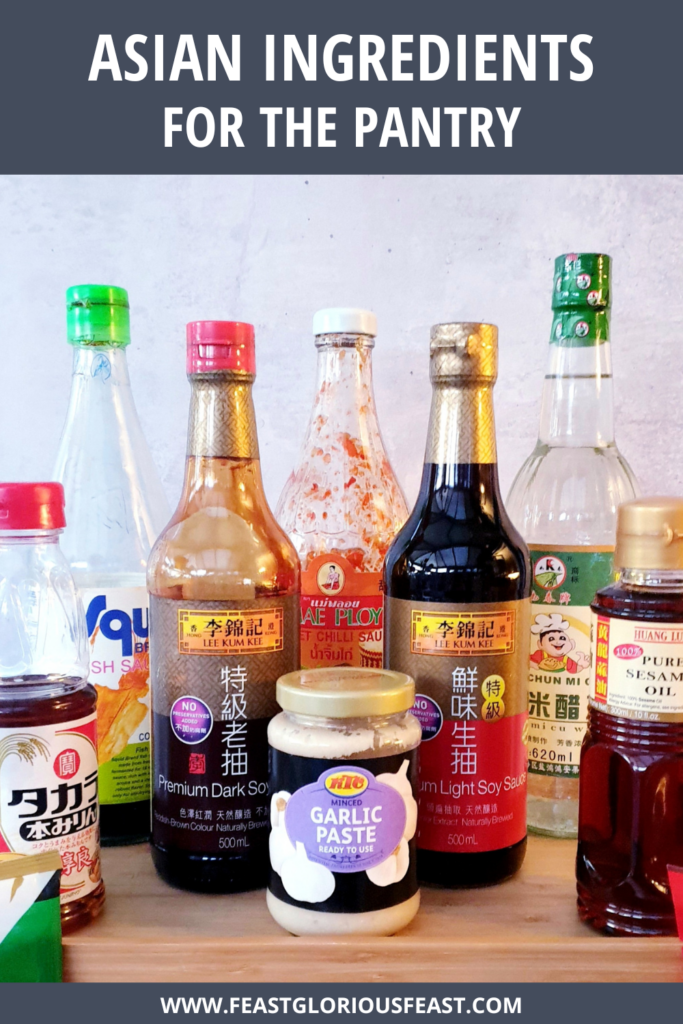
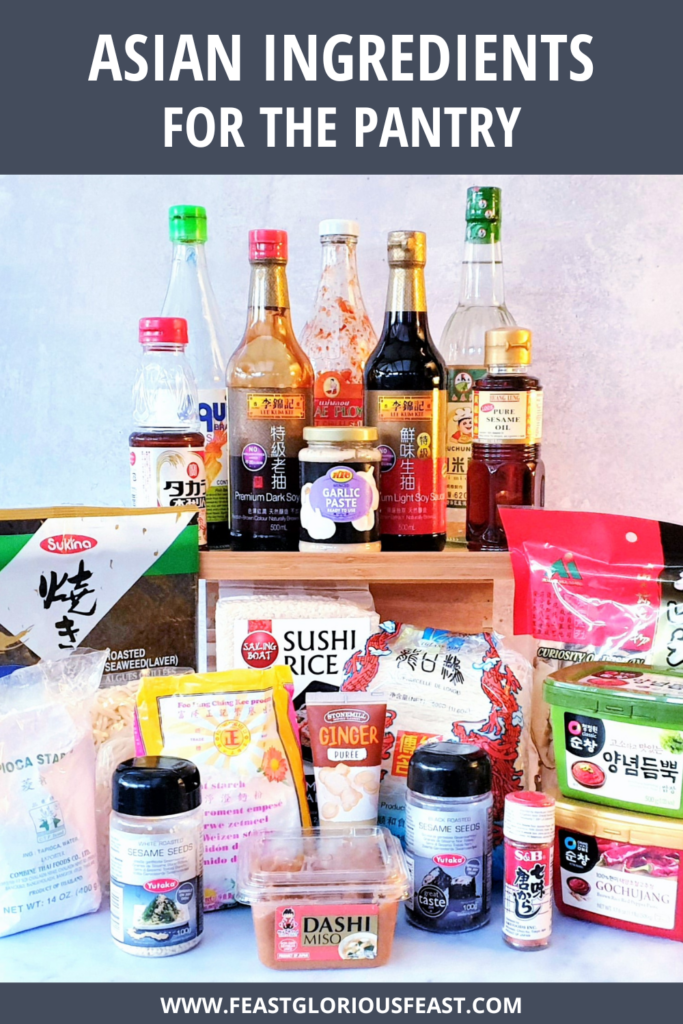
Keep Up to Date
Make sure you SUBSCRIBE to my newsletter and avoid missing out on any of my newest and bonus content. Don’t worry, I promise not to spam you or bombard you too often. Plus you’ll receive a copy of my FREE 7 Day International Meal Plan!
Also please don’t forget to follow me over on my social media channels over at Facebook, Twitter, Instagram and Pinterest. I love to interact with my followers and I’d love you to share my content with your friends too.



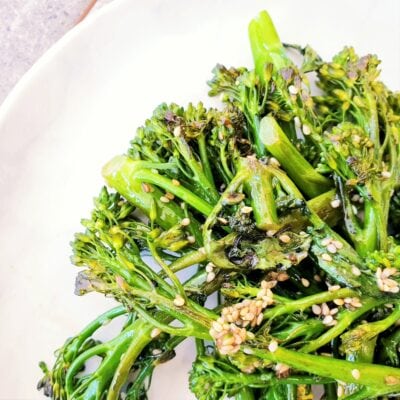



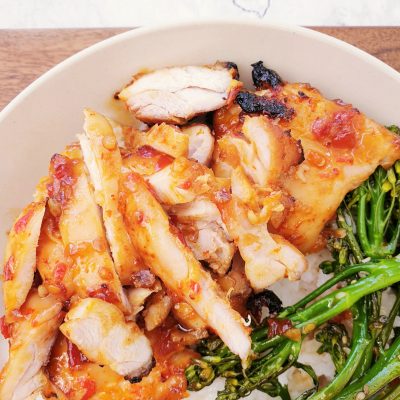


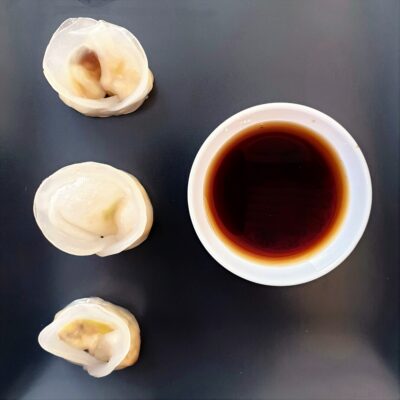








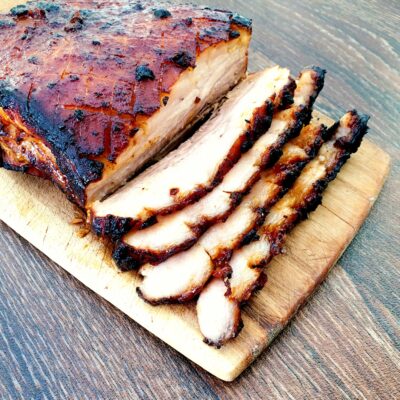



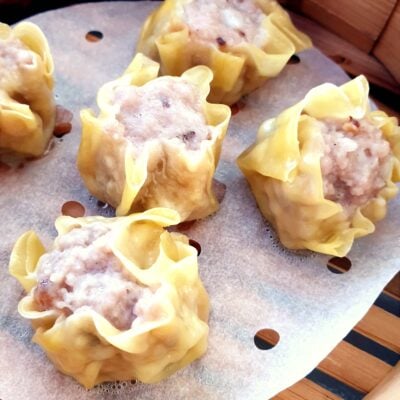





Choclette says
Ooh, what a fabulous list of ingredients. I’ve been after gochujang forever, but the only place I’ve seen it is at Waitrose and it has so many crap ingredients in it, I’m not tempted. I’ve tried online, but got lost down a rabbit hole and still couldn’t find the real thing – ie pure fermented product without a load of superfluous ingredients. I’d already looked at the one you’ve linked to and dismissed it.
You can probably tell I’m a bit of a purist.
As for doenjang, I’m wondering why I’ve never heard of it. Now there’s something else I feel I need to track down 😂
Chloe says
I’ve had a look and the one they sell in Sainsbury’s has no nasties in it – https://www.sainsburys.co.uk/gol-ui/product/sun-hee-gochujang-sun-dried-red-chilli-paste-170g Any less ingredients than what’s there and its not going to be gochujang anymore – they’re all essential, including the wheat. You could probably find the same brand of doenjang in an Asian grocers. Hope that helps – they’re def worth seeking out!
Choclette says
Well no one’s ever called me the speediest person in the world. It’s taken me this long to see your suggestion. Thank you for going to the trouble. I will check it out. Just re-read your post and now want to cook something Asian tonight.
Veronica says
Great post Chloe. I have most of these in my pantry, but I must admit I haven’t got Shichimi – definitely going to keep an eye out for that one. And I couldn’t agree with you more about not cooking with sesame oil.
Chloe says
Oh my god, I saw someone with nearly £25k followers on their Insta sploshing it around the pan like it was veg oil just this morning. On their stories. I was crying!